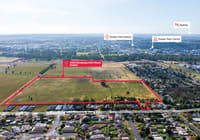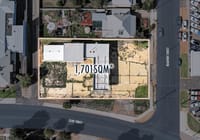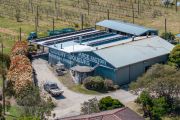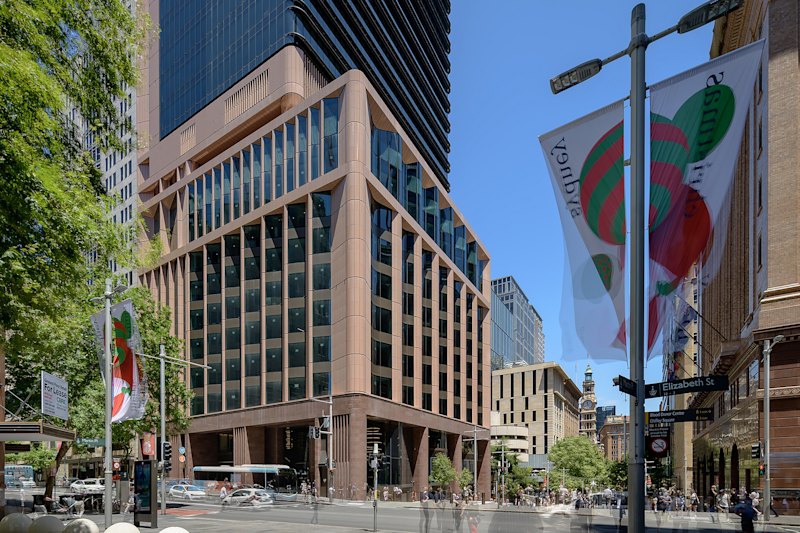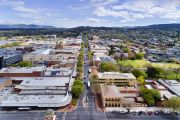
Regional Victorian cities set to be attractive office hubs in a post-COVID-19 world, agents say
Agents in some of Victoria’s most prominent regional markets are predicting that the COVID-19 pandemic will accelerate the trend of decentralisation underway in the commercial property market, with businesses increasingly looking to set up shop in hubs such as Ballarat and Geelong, instead of Melbourne’s suburbs.
“We’re of the opinion that we’re going to see more organisations that have the one big office in Melbourne or Sydney that are going to want to have a second satellite office in the case where, if COVID-19 or a similar situation happens again, they don’t have to shut down the entire office,” said Colliers International agent Ben Young, who is based in Geelong.
While secondary corporate offices are not a new phenomenon in the city, Mr Young is expecting there will be a lot more inquiry from major corporates looking to spread their risk across multiple locations.
“Long prior to COVID-19 we were seeing a number of government agencies moving to Geelong and subsequently smaller businesses that wanted to align with those agencies would move to the city,” he said.
“There’s a number of private businesses now interacting with us around that, having preliminary discussions [in the wake of the coronavirus pandemic].”
Ballarat, which is set to become home to up to 1000 Victorian government employees including up to 600 public-sector positions relocated from Melbourne to its new “GovHub” development at 300 Mair Street in early 2021, is also well placed to host secondary corporate headquarters.
“Now that businesses are aware they need to diversify their office requirements, Ballarat is really well positioned to handle that,” said Lauchlan Waddell, a sales and leasing agent at Colliers International’s Ballarat office.
“I’d like to think that if we look at the positives of the pandemic, it does change mindsets in that companies don’t have to operate in metropolitan areas to be successful. Having a regional office can help businesses rather than being in the one location – if there is a shutdown again, it helps to have multiple locations.”
While businesses looking to distribute their workforce over several offices might traditionally have looked to the city suburbs for their space, regional hubs hold several advantages.
“[Geelong] will definitely attract people by the price point as well – depending on the sort of asset they are after, there is definitely a distinct price difference between the A-grade market in Geelong and that of Melbourne,” Mr Young said.
“For the same price as A-grade stock in Ballarat, you’re probably looking for a B-grade or C-grade building in suburban Melbourne,” Mr Waddell said.
But it’s not just about the money. As people increasingly seek more space in a post-pandemic world, both regional cities have plenty to offer in terms of lifestyle benefits, while still being close to Melbourne.
“It comes down to liveability for employees as well. There’s fantastic educational institutions, fantastic healthcare and there is that affordable side of things as well,” Mr Waddell said.
“Rather than having two in Melbourne it makes sense to have a regional office – it’s an hour by train from Geelong to Melbourne and that’s set to halve under the current high-speed rail proposal,” Mr Young said.
Trend throughout Australia
Whether its regional or suburban markets that benefit, one thing is clear: major corporations throughout Australia will be looking to spread staff across different locations post-pandemic as they seek to reduce the number of employees gathering in one place.
Banks, for example, could repurpose suburban branches to become mini office hubs for employees who don’t wish to travel into the CBD.
“We’re thinking of it as a distributed workplace model. You will then choose, do I come into a CBD location or do I, say if it’s a bank, repurpose that bank branch so that it becomes like a mini office for someone to be able to come in for a couple of hours, join a meeting, see some colleagues and clients and then nip home,” Deloitte’s Virtual Office Leader Robbie Robertson recently told Commercial Real Estate.
“That distributed workplace model I think we will see over the next months as people start to look at what that looks like for themselves.”
Such a model would have clear environmental and cost advantages.
“If the cost of rent in a non-CBD location is clearly far more cost-effective for an organisation to manage and therefore it may provide them with an opportunity to reduce the high-cost, CBD premium location space that they have but still ensure there is enough physical space for their workers to come in and do what they’re being asked to do.”



